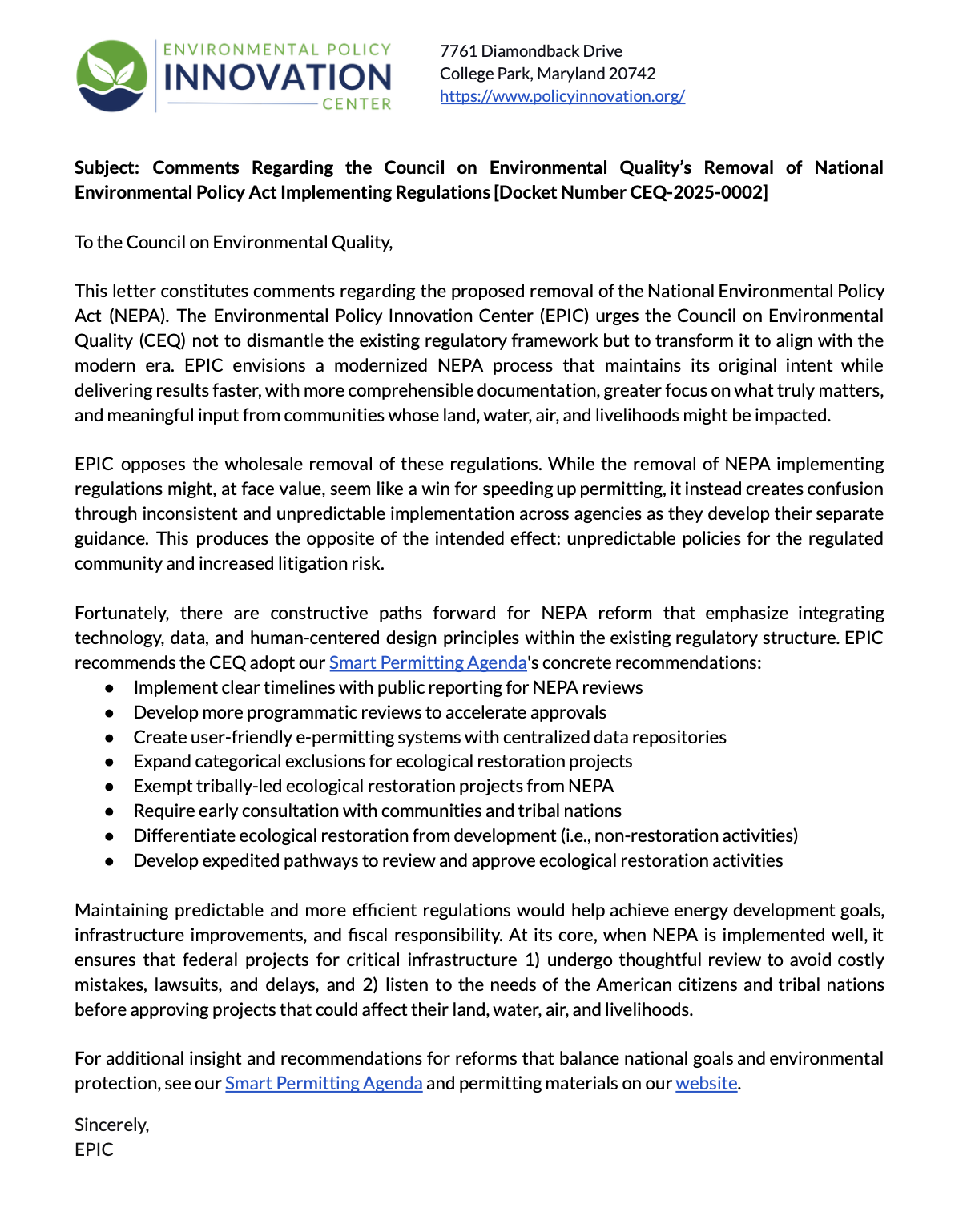
Environmental Permitting is Getting Better
It's not that permitting change might happen. It has changed, is changing, and will change more. We’ve had a great collaboration with the team at Inclusive Abundance these last 15 days, hearing about 15 ‘wins’ for permitting reform they wanted to celebrate. We are starting our own 15-day countdown now. It’s a great way to acknowledge all the progress underway to make environmental permitting laws and programs that better serve the planet, people, and our prosperity.

Better, Faster, and Fairer: State Strategies for Permitting Innovation

Comment Letter: Colorado’s Regulation No. 87 for Permitting and Mitigating Dredge and Fill Activities
Comments on Colorado’s draft Regulation No. 87 for permitting and mitigating dredge and fill activities

Permitting Digitalization in Virginia
Virginia stands out from other states in its permitting reform efforts because it has really nailed transparent permitting, and in doing so, significantly cut down the processing time for most state permits.

4 Pillars for Permitting Innovation
The permitting reform space is growing fast, and there are clearly different philosophies for why this work is important, what values should guide us in identifying solutions, whether reform is even needed, and how we build a large enough coalition to make meaningful changes at all levels of government.

Thoughts on the ESA Amendments Act of 2025

Predicting DOGE AI Deregulatory Tool Recommendations

Updates to our Permitting Tools Inventory

Comment Letter: Nationwide Permit Reissuance
Comments on “Proposal To Reissue and Modify Nationwide Permits” (COE-2025-0002)

How effective governance can streamline restoration efforts—Louisiana CPRA Case Study

RIBITS User Survey Reveals Desire for Data Reliability and Modernization

NEPA, CEQA and the winds of change

A Look At CEQ’s New CE Explorer
On June 5th, the CEQ’s Permitting Innovation Center released their first prototype experiment, the Categorical Exclusion Explorer. The Explorer is the first time a collection of cross-agency Categorical Exclusions (CEs) has been transformed into data for experimentation. This is still in the experimental stage, and we applaud the Permitting Innovation Center for releasing early-stage products and experiments. Early and iterative releases are ideal for gathering feedback and improving future releases.
We’ve discussed using existing environmental review data management and sharing as an area ripe for experimentation and innovation.

New Interactive Tools and Data to Explore Mitigation Bank Timelines

California’s restoration bottleneck deepens biodiversity debt

NextGov: Trump administration debuts permitting modernization plan, even as staff cuts could jeopardize it

First Look at CEQ’s Permitting Technology Action Plan
This blog is a first look at the Council on Environmental Quality’s (CEQ) Permitting Technology Action Plan, which aims to modernize federal permitting processes. The plan includes data standards for interoperability between agencies, service delivery standards for workflow automation and digital documents, and a maturity model for agencies to gauge their progress. Key highlights include implementing data standards, improving document management, and using GitHub for open collaboration. We note the potential for multi-agency procurement and prize competitions and outline potential impacts for agencies, applicants, and vendors. We express cautious optimism due to the plan's technical depth, interoperability focus, and use of existing work but also note concerns about talent gaps and the aggressive initial 90-day implementation timeline.

We need to simplify environmental permits to boost their impact

Trump’s Permit Tech Memo: Promising Ideas, Implementation TBD

Comments Regarding the Council on Environmental Quality’s Removal of National Environmental Policy Act Implementing Regulations
EPIC submitted public comments opposing the wholesale removal of NEPA regulations by the Council on Environmental Quality (CEQ), arguing it would create confusion and increase litigation risk. Instead, we proposed modernizing the NEPA process through our Smart Permitting Agenda, which includes implementing clear timelines, developing programmatic reviews, creating user-friendly e-permitting systems, and establishing expedited pathways for ecological restoration. We believe an updated regulatory framework can maintain NEPA's original intent while delivering faster results and ensuring meaningful community input.

